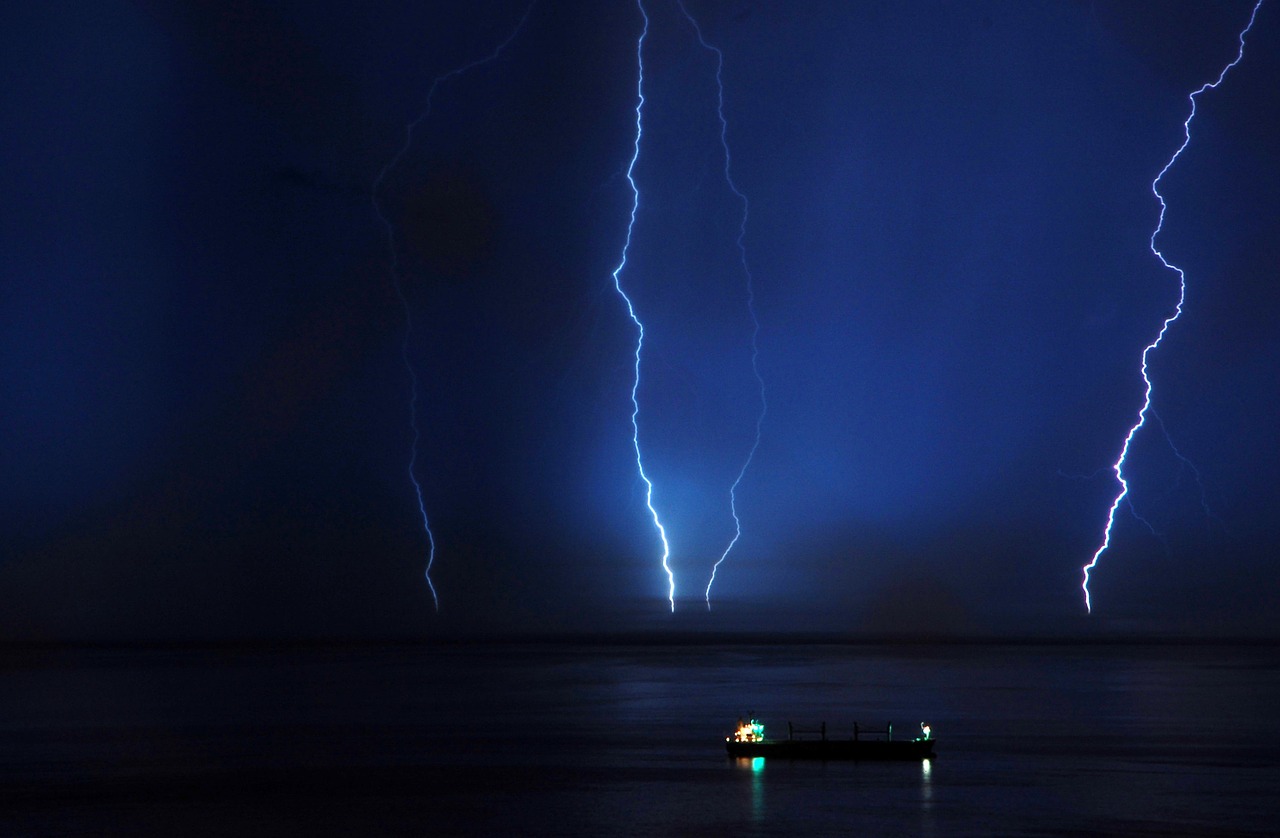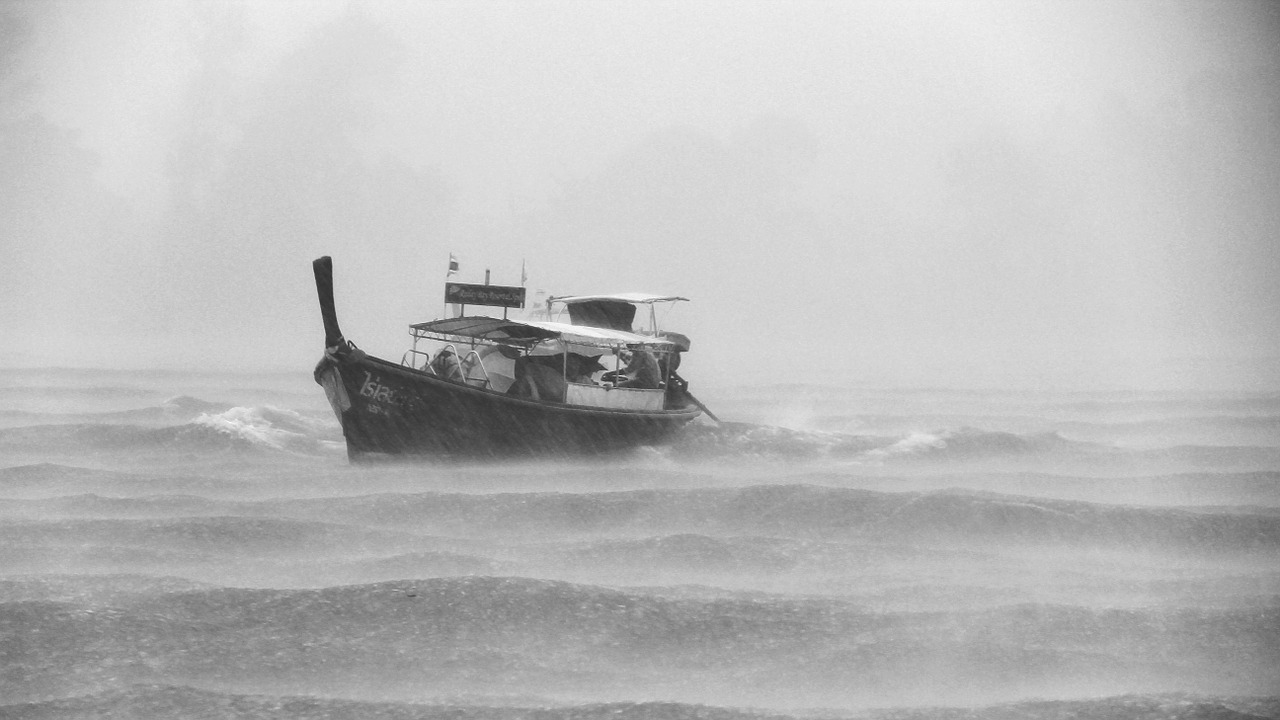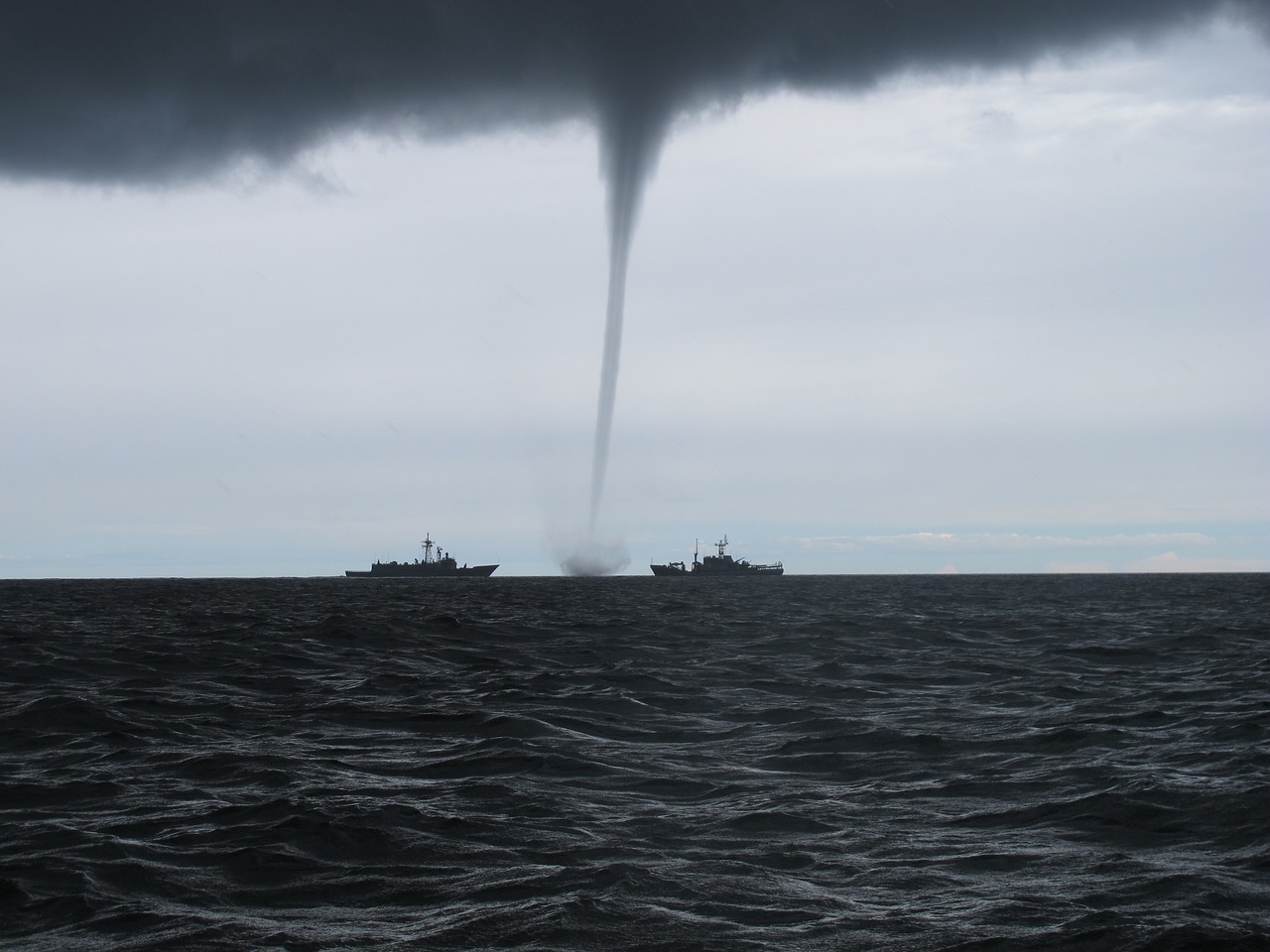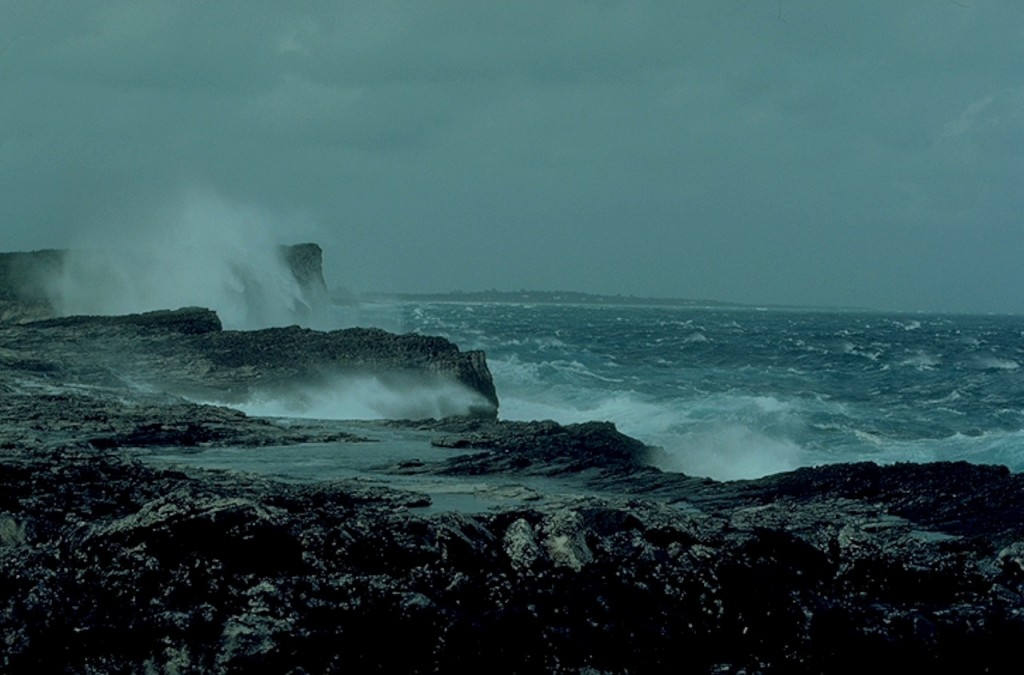Sailing is fun and relaxing as long as the weather conditions are favorable. But what if you head off to a new destination on the wrong day? Sailing is our passion and we love to share our knowledge with our readers. So, here are some golden rules that will help you sail safely in bad weather.

Do a Prior Verification
Before you embark on a new journey, you should always check your vessel is well-provided.
The first thing to you should pay attention to is your safety gear. Make sure you have all the necessary items that will secure your vessel during a storm like harnesses and tethers. The safety gear will help balance your vessel’s movements during the storm. This will also keep seasickness at bay and help your crew feel better and safer during bad weather.
Another thing you must check before you set sailing are the lines; they must be unworn and secure.
A VHF marine radio is a must on board and it will keep you up to date with the weather forecast. Checking it regularly might help you avoid bad weather, but keep in mind however that no forecast can be 100% precise.
Avoid dangerous Areas
When you’re out there and the storm’s about to begin, your first intention will probably be to sail towards safe land. However, this might not be the best choice at that point. As the storm begins, the area you plan to sail through can become dangerous due to strong winds or big waves. Therefore, it’s often better to avoid shallow waters or channels that are not very wide. Rocks and cliffs are particularly hazardous during stormy weather because the wind can push you towards them and cause a collision. So, if this is the scenario, sometimes the open waters might be safer.

Protect Your Boat and Crew
The most important aspect that will keep you safe in bad weather is knowing how to prepare your boat. The following measures will help you secure your vessel and protect your crew.
- If the storm breaks, you will have to make sure your bilge is dry and to do such, you’ll need a good dry bilge system or bilge pump.
- The mainsheet car should be positioned downwind. This will enable you with more control over your boat and also ensure a more comfortable experience for the passengers.
- If the weather starts threatening, you should take preventing action by closing all the windows, the ports and the hatches to secure the boat against rain and large waves.
- Put everything in order. Your boat should be well-organized especially in bad weather. Make sure no gear is loose and you your safety equipment and other necessary items are at hand.
Use Storm Jibs
These jibs are ideal for bad weather. Most experienced sailors who go on long distances and venture far into the open waters have these items on board. Storm jibs area a great aid during strong winds. If you have these extra storms, you might be able to continue sailing fuzz-free, without implementing other sailing techniques or extra measurements.

Reef
Reefing your sails is your number one priority as the bad weather signs start to show. This technique will enable you to manipulate your boat easier. It’s always easier to do it while the weather’s not at its wildest peak. So, the best tip for efficient reefing is to do it in time, thus you avoid the dangerous winds. Reefing implies the shortening the vessel’s sails. Each boat has its reefing system and once you’ve got used to yours, you’ll have no trouble in repeating the procedure.
Heave
Many sailors choose heaving to as a mean of securing their boat before the storm. This method will slow down your boat’s progression and ensure a safer position and a fixed helm. Thus, your vessel will be easier to handle during bad weather, without the necessity to stay at helm. Heaving to means that the action of the sails is controlled and there is an equilibrium between them. The winds basically blow onto the frontal side of the sail, and the boat is no longer pushed forward.
Use the Anchor
If you are used to sailing offshore, your boat is probably provided with a sea anchor. Having one is essential especially during harsh weather when strong seas will test your boat and your sailing ability. Using the anchor helps you stabilize your vessel. Savvy sailors will usually employ the anchor during strong and long-lasting storms.
Be Ready to Face the Waves
Strong storms are usually complemented by equally menacing waves. The first thing to keep in mind is not to be alarmed. High waves can be handled skillfully and with minimum impact for your vessel if you manage to take them on at a 45 degrees angle. This technique will help you stabilize your boat. Moreover, your fellow passengers will thank you for being their hero and keeping them at bay from seasickness.
Ask for Help
Last but not the least, never feel embarrassed to ask for help. If you don’t feel ready to steer your boat during unfavorable weathers, it’s better to let a more experienced person handle it.
If you travel with anyone else who practices sailing for a longer time, ask them to take your place at the helm. It’s for the better, you’ll feel more at ease and so will the rest of the crew. Besides, this will also be a good chance to learn some useful tips from an experienced person.
We honestly hope that you will not be required to apply the above-mentioned techniques any time soon. Nonetheless, you can’t trust the weather, so it’s always better to be prepared to face it at its worst. If you want to get more insight into the art of sailing, check out the rest of our posts, we’ve covered plenty useful topics so far.

